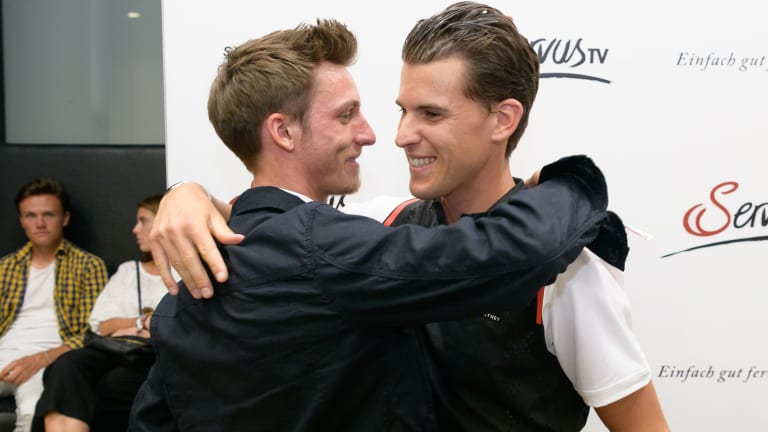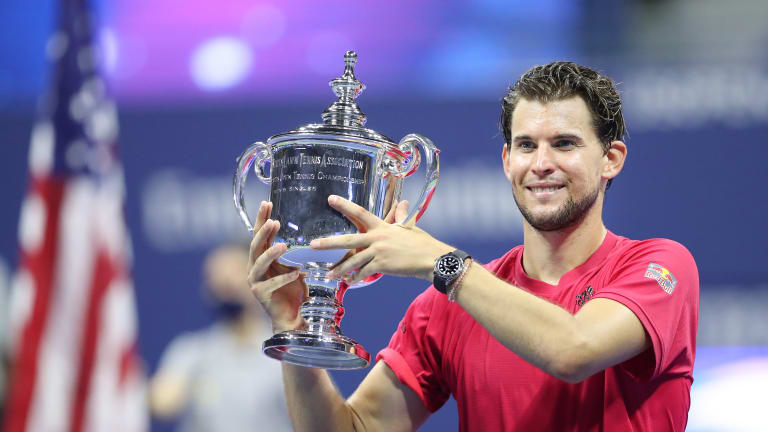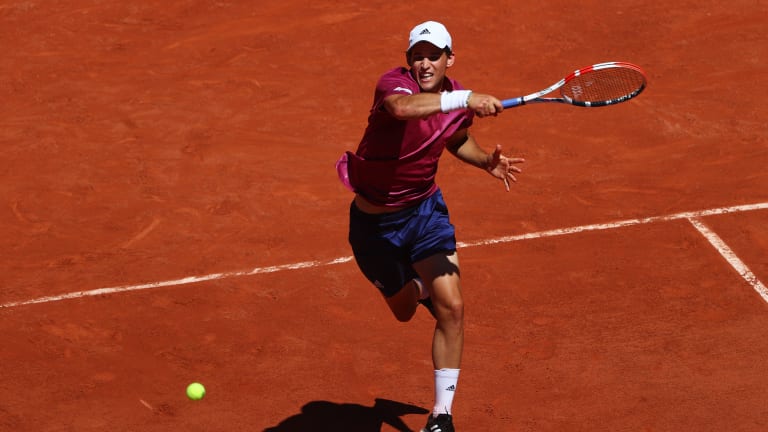“Flying high” is an expression that lends itself to various interpretations. It may describe a person who has achieved peak prosperity, a plane traveling at elevated altitude, or one’s state of mind after a moment of bliss.
Dominic Thiem frequents all of these experiences. Whether appraising success by dollar signs, wins or trophies, Thiem ticks these boxes with aplomb. A sizable chunk of his life as a tennis player is spent soaring above the clouds to meet the demands of tour life. And he’s felt no shortage of elation, whether it be the Austrian’s debut on the ATP rankings, the first time he defeated a Big Three member, or his long-awaited Grand Slam conquest.
Thiem gets airborne while working, too. After winding his racquet back on the baseline, Thiem is known for getting both of his feet off the ground when unleashing his gale-force forehand. It’s striking to the eye—though admittedly a short takeoff and landing when juxtaposed against ski jumper Gregor Schlierenzauer, who established himself as a legend back home, and hero to Thiem, by mastering the art of flying high.
“They are crazy,” Thiem expressed in an endearing manner during our conversation last September. “I cannot relate to ski jumping, nobody can. Playing tennis, you can do it no matter how good you are. Millions of people play tennis, but you cannot say, ‘I want to go ski jumping tomorrow’, go on a hill and jump down.”
Still, it’s not as if Thiem is wholly unfamiliar with the hair-raising sport.
“I liked it since I was a little kid. I enjoyed watching, I still do now,” Thiem says. “He was the first ski jumper I met in person. When I became better, I started to tell people I want to meet Gregor because I loved to watch him. He’s a super nice guy. We’re quite a lot in contact, actually.”
Schlierenzauer holds the record for 53 individual ski jumping wins on the World Cup circuit. Long before rewriting history, this determined youngster explored his athletic curiosities. A sports junkie, the Innsbruck native immersed himself into skiing, snowboarding, football and tennis, which he took up from the ages of 10 to 14. Despite being entranced by Roger Federer, whose German interviews caught his attention, nothing surmounted the instant connection Schlierenzauer felt when he flew for the first time.




